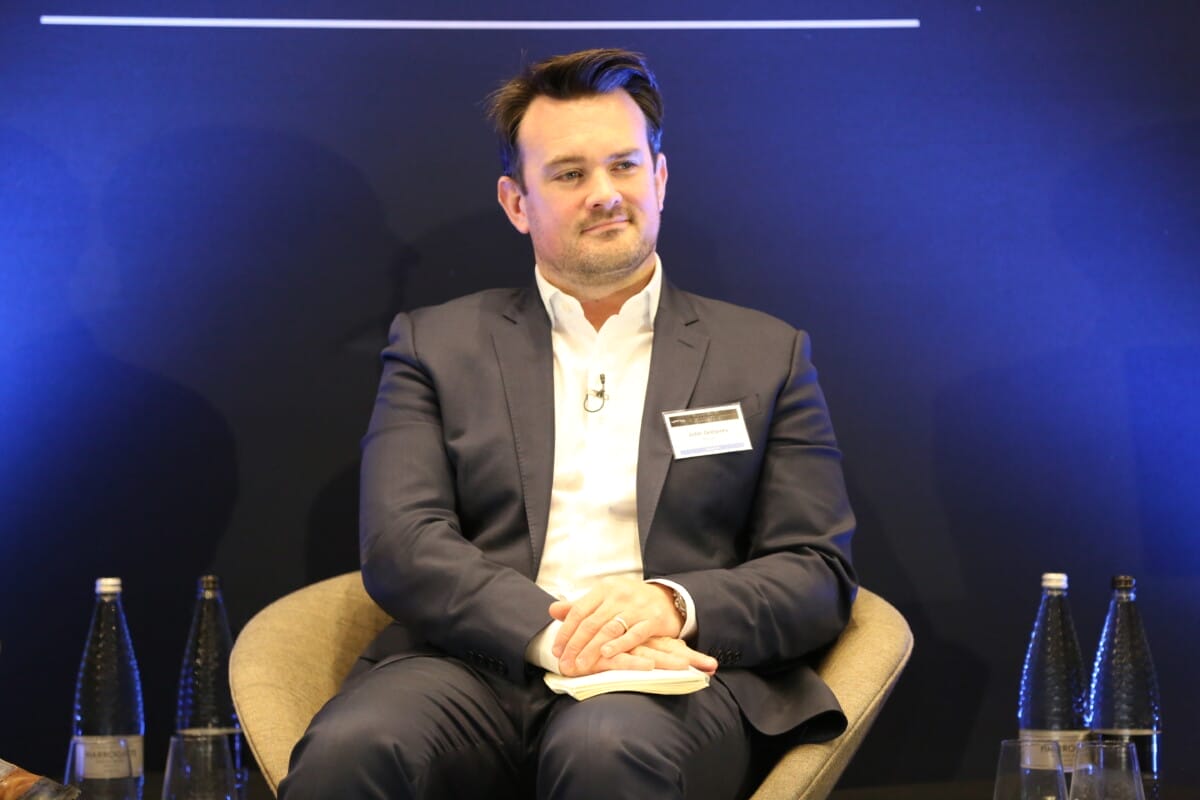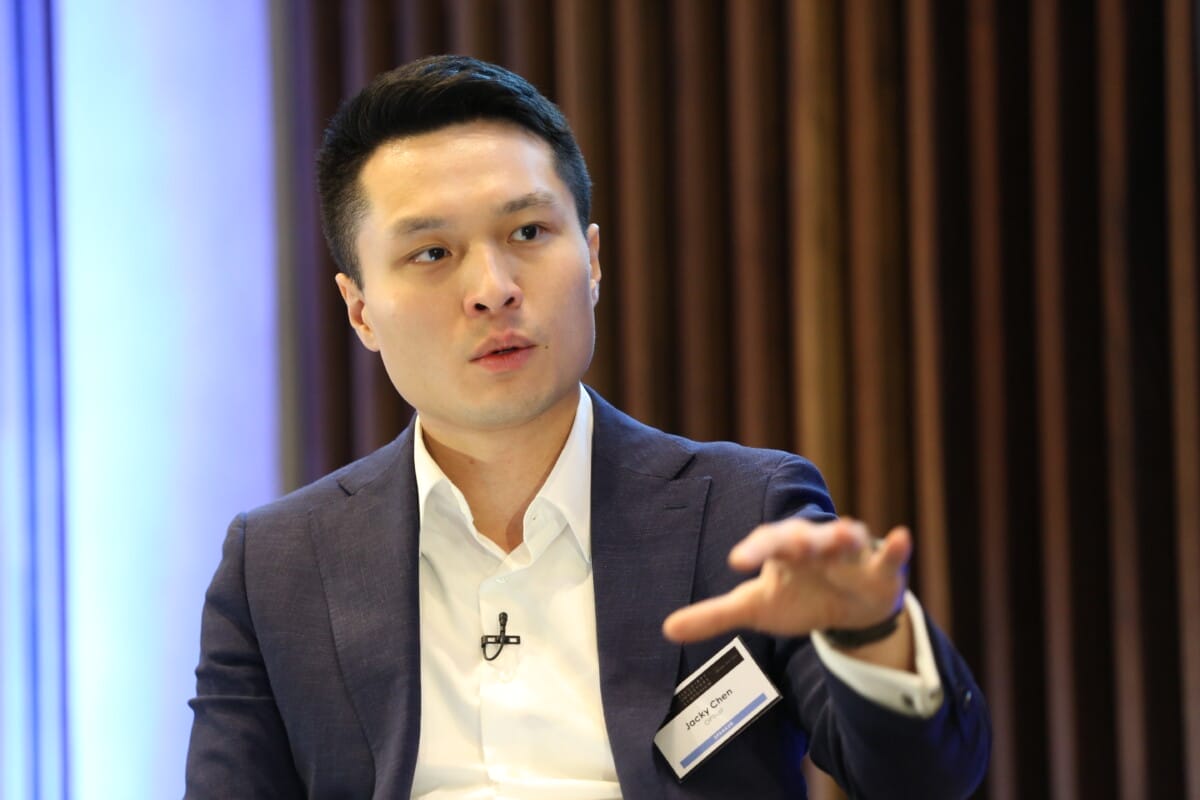The US is only powerful enough to fight a war on one front and fading US power and military muscle has huge ramifications for the rest of the world.
Speaking at the Fiduciary Investors Symposium at Oxford, leading global affairs scholar Stephen Kotkin, senior fellow at the Hoover Institution and at the Freeman Spogli Institute, Stanford University and Birkelund Professor Emeritus at Princeton University, warned delegates that although the US remains the most powerful country in history, it is less capable of applying power at the necessary level.
The US is in the process of retrenching to hone resources on a potential war with China.
“America no longer has the wherewithal to fulfil its commitments,” he said.
The US accounts for 5 per cent of the global population and 25 per cent of global GDP. It holds 50 per cent of global military capability and companies in Silicon Valley are global leaders on innovation. But Kotkin said the US only has the power to fight one war, and reflected on the mismatch between the demands on US power and the inability of the government to meet those demands.
The US is particularly stymied by its “hair-raising” level of debt for which Kotkin said the government has no solution.
“We are undermining US power from within. We are doing it to ourselves,” he said.
The realisation that America can only fight one major war in a single field is reflected in the absence of a defence industrial base. America’s military commitments remain and are expanding, but it has no ability to meet them.
Yet global stability rests on US power. Post-WW2 Europe has been built on the basis of never having to fight a war again. Today, Europe is under pressure to re-arm, but Kotkin warned Europe will have to change its DNA for this to happen. Europe and other “middle powers” like Japan are reliant on America’s nuclear umbrella. Today America is increasingly saying that it is incumbent on these countries to defend the peace and prosperity going forward.
Kotkin warned that if the US goes to war with China, US support of Europe will disappear.
“US assets in Europe will be gone. There will be nothing but the nuclear umbrella,” he said.
He warned that Russia would be set free by the collapse of NATO but suggested that Europe could form a mini-NATO to defend itself. He singled out Poland, Sweden and Finland as potential leaders.
Kotkin reflected on Obama’s legacy to illustrate America’s fading power. He said Obama wanted to retrench, but got into forever wars in the Middle East by doubling down in Afghanistan, and overseeing failing strategy in Syria and Libya. These wars were constant demands on American power, even at a time Obama recognised the demand on US power superseded its capability. Now, Trump has reduced the Cold War to China.
Kotkin warned that a US-China war “is the end of the world as we know it”. More than the humanitarian tragedy of Ukraine or Gaza, he said a US-China war would involve unprecedented destruction. China has built up massive military capability, and he pointed to the country’s population of 50 million 18-25-year-old men with the capacity to fight.
Never before have China and the US been this powerful at the same time. China observed the Japanese and South Korean model, growing rich by exporting to the US market and building its middle class. The US thought that China would be a responsible stakeholder in the international system yet China doesn’t want to exist in a US-dominated world.
Kotkin compared today’s challenges to the 1930s when multiple conflicts like Italy’s invasion of Ethiopia, Hitler’s marching troops into the Rhineland and Japan’s seizing Manchuria acted as a precursor to WW2. Today those conflicts are wars in Ukraine, the Middle East, and China’s growing presence in the South China Sea. Although driven regionally, he said global war begins when regional conflicts come together. “It’s only after it happens that it becomes obvious,” he said.
Kotkin said that the tragedy in Gaza and Ukraine is existential only for the people being killed; these wars do not represent geopolitical risk. He said that Israel is standing up to the expansion of Iranian proxy power, but that Israel will struggle to consolidate its gains and win the peace.
However, if the US and China go to war, the global economy will no longer function the way it does, with profound implications for whole cities and industries.
KEY Issues coming together
Kotkin said that the world’s attempts to solve the climate crisis have failed. International meetings led to governments making promises they haven’t kept in a “pantomime bluff” most recently manifest in Azerbaijan, its most “grotesque version” yet.
“This is now where the solution is going to come from,” he said, arguing that the solution to climate change will ultimately come from technology.
Meanwhile, tech companies that pledged net zero have now erased their promise because they are consuming huge amounts of power to drive the data centres supporting AI, in “another bluff.”
“Demand for power and energy is only going up,” he said.
Kotkin said social media was corrosive and elevates the fringe into the mainstream. Fringe voices that promote falsehood and extremism were always present, but less visible. He said that the business model of social media is to destroy free and open societies that cannot censor and control: when they try to they just make the problem worse.
Reflecting on the challenges for investors to prepare for a Trump presidency, he said the man himself “has never prepared for anything” and will run a government based on improvisation. “It’s hard to predict where it will go,” he said.
Kotkin reflected on the challenge Trump faces in withdrawing from Ukraine. Trump is mindful of the harm Biden’s poorly managed withdrawal from Afghanistan did to his ratings. “Americans don’t like getting involved in wars, but they hate being on the losing side,” he said.
He attributed much of Trump’s election victory to the electorate seeking to punish the Democrats and an enduring pattern of incumbents being thrown out. Some democratic policies were particularly unpopular like decriminalising the border and the inflationary consequences of policy.
“Voters can’t get what they want so they can punish what’s in front of them,” he concluded.


 The second gripe is the shape of the fee structure, where there are more nuanced opportunities for asset owners and managers to align their goals, Amin said.
The second gripe is the shape of the fee structure, where there are more nuanced opportunities for asset owners and managers to align their goals, Amin said. 
